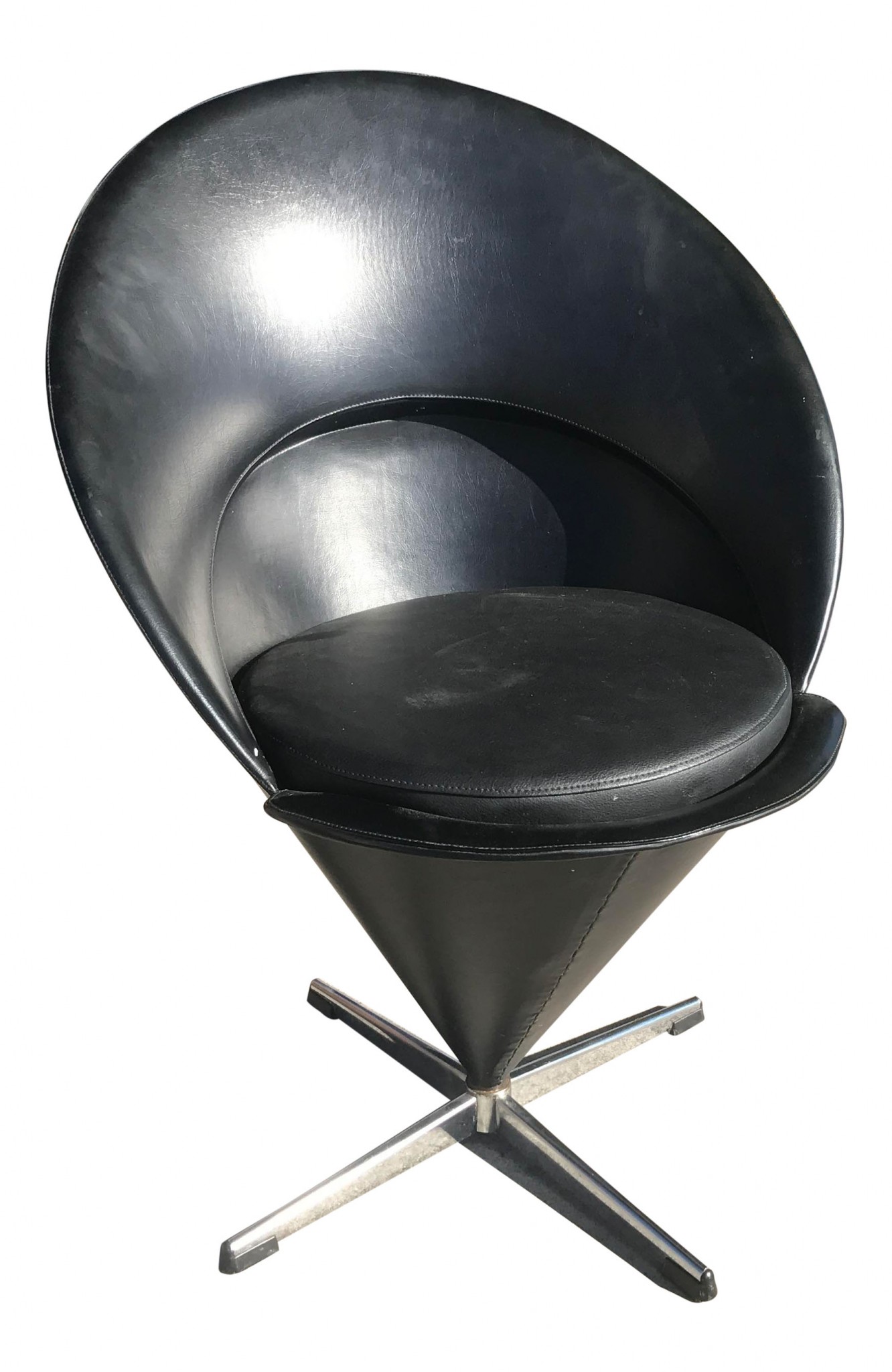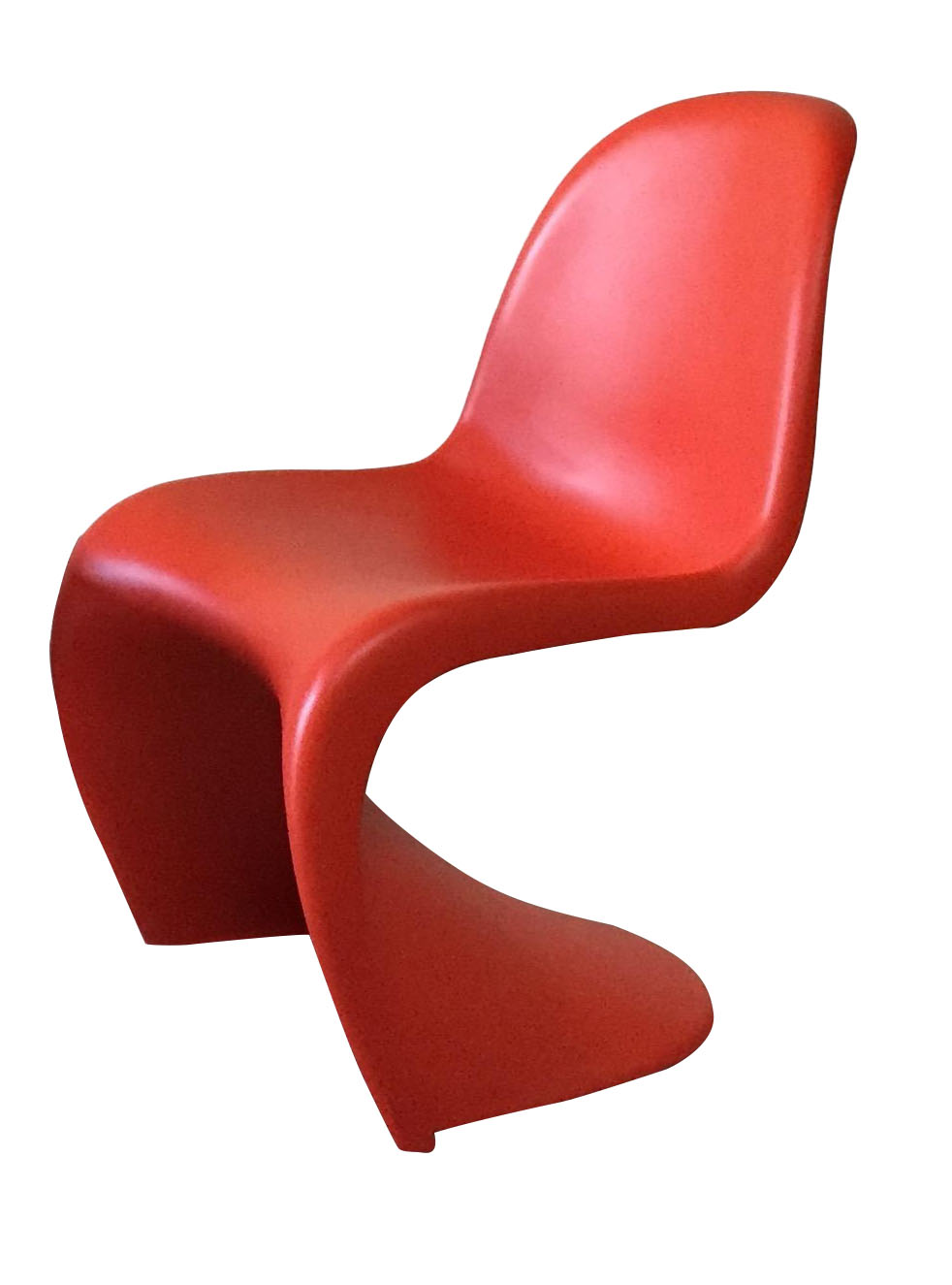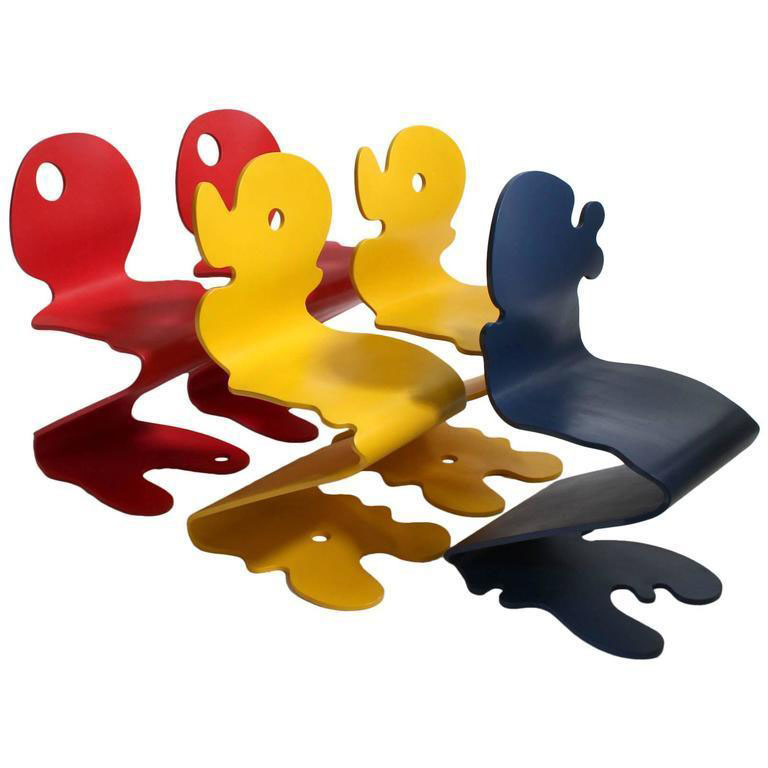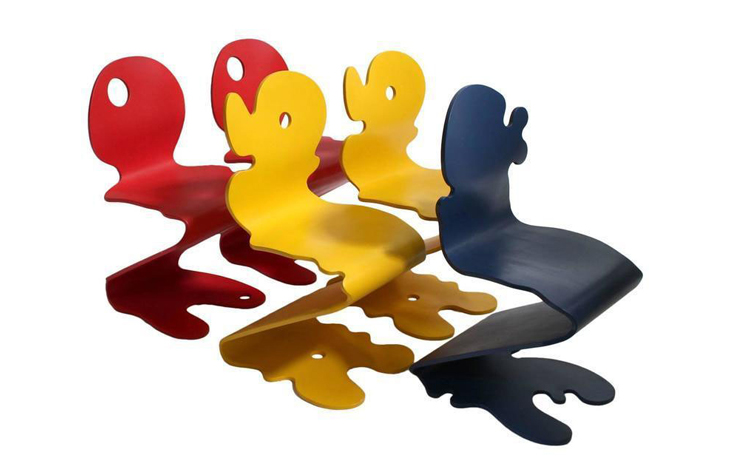Trained as an architect, Verner Panton designed furniture, lighting and interiors featuring innovative materials, daring colors and bold shapes. His resulting work, groundbreaking at the time, still pops with eye-catching vibrancy.
Panton was born in Gamtofte, Denmark, in 1926. Following a year of military service, he attended the Technical University of Odense. Longing to study art, Panton compromised with his innkeeper father, who was against his son being an artist, and trained at the Royal Academy of Fine Arts, School of Architecture in Copenhagen.
The young designer began his career as an apprentice to Danish architect and designer Arne Jacobsen, assisting on the three-legged Ant Chair. He followed this by travelling extensively throughout Europe, immersing himself in the design world and establishing contacts with industry figures, prior to establishing his own firm in 1955.

In the late ‘50s, Panton redesigned his family’s inn and created the Cone Chair for the project. Featuring a cone-shaped seat mounted on a swivel base and its point, the chair has a semicircular shell that extends to form the back and armrests. The chair was soon released in partnership with Danish firm Plus-Linje.

Panton experimented with materials in his designs in the 1960s. He designed the first inflatable furniture pieces. His Panton Chair, featuring a single-formed, injection-molded plastic seat, was designed in 1960 but not produced in 1967 due to its technical challenges. Vitra produced the chair in the ‘60s and continues to offer the design in three versions, including the Classic, which has a rigid polyurethane foam with a glossy lacquer finish. An early model is part of the Museum of Modern Art’s collection.
The designer continued to innovate throughout his career. His lamps featured glass globes, metallic disks or moving, fan-shaped disks. Panton’s interior design work for corporate customers featured their state-of-the-art materials, like Bayer’s dralon. His vibrant Pantonic stackable chairs were made from molded, lacquered plywood and designed in abstract shapes.

“The main purpose of my work is to provoke people into using their imagination,” the designer said. “Most people spend their lives living in dreary, gray-beige conformity, mortally afraid of using colors. By experimenting with lighting, colors, textiles and furniture and utilizing the latest technologies, I try to show new ways, to encourage people to use their phantasy imagination and make their surroundings more exciting.”
Panton died in 1998. Reissues of his designs are available through Vitra and Verpan. Original designs can be found at auction.












